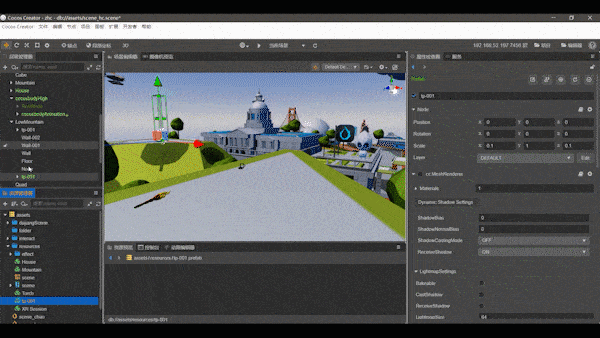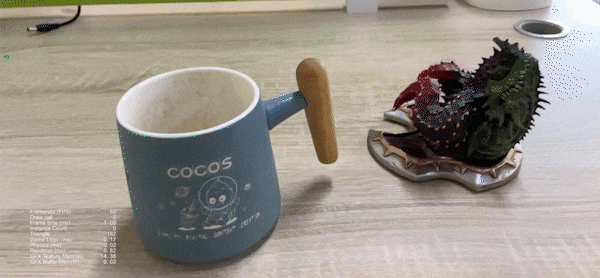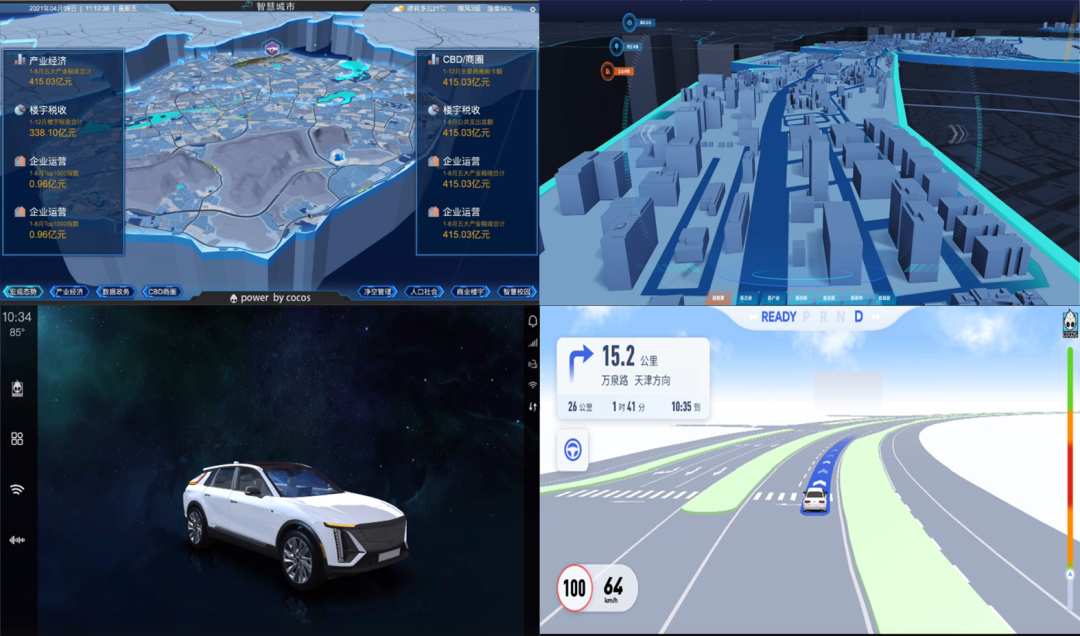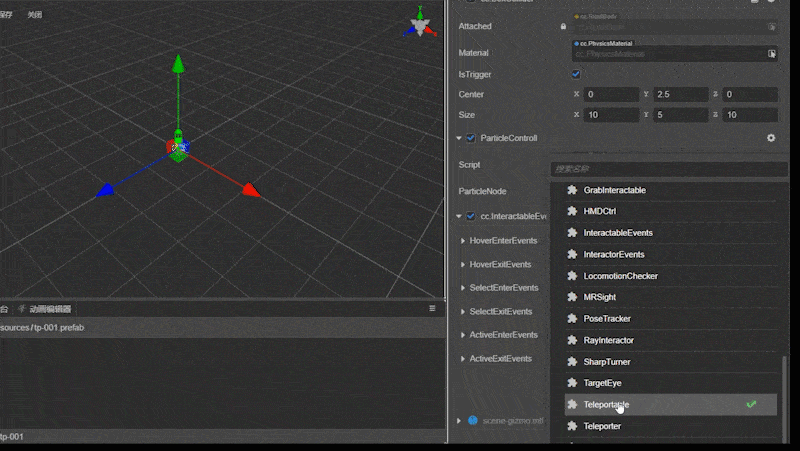Last month, Apple held the WWDC2022 Global Developers Conference. Although the much-anticipated AR/MR head-mounted display device was absent, the expectations in the market have not declined. In recent years, with the development of XR (AR/MR) With the improvement of VR/MR) technology and the improvement of hardware experience, the industry is showing a blowout trend. According to the China Academy of Information and Communications Technology forecast, the global virtual (augmented) reality industry scale will grow by about 54% in the next five years, of which the VR growth rate will be about 45%. AR growth rate is about 66%, and both market sizes are expected to reach a total of 240 billion yuan in 2024.

Users' demand for high-quality XR content is becoming increasingly urgent. Recently, Cocos has cooperated with Rokid, a Chinese AR smart glasses manufacturer. Cocos will launch Cocos Creator XR, an XR content creation tool, and fully integrate the Rokid Air development environment for smart glasses, so Cocos developers do not need other SDKs. The digital content can also be easily published to run on Rokid Air. Rokid will also simultaneously launch a content creation incentive policy for Cocos developers. The two parties will jointly accelerate the porting and transformation of 2D/3D games and provide Cocos developers with the technology, platform, and service support needed to seize the AR content depression.
The cooperation with Rokid is a microcosm of Cocos' entry into the AR/VR field. In the future, based on the Cocos Creator XR, developers can perform multi-device cross-platform deployment in one development and achieve compatibility and adaptation to mainstream XR devices at home and abroad.

For Consumers, Improved Applications
Compared with other VR devices that require more private space in use, the application of AR devices is much lighter. Taking Rokid Air as an example, the lightness is reflected in two aspects: First, physically, Rokid Air only weighs 90 grams, and its high portability greatly expands the usage scenarios; second, in terms of content, AR applications can be based on real scenes and superimposed Richer applications, which put forward a higher test for the quality and scalability of the content.

In recent years, popular AR marketing and AR viewing have been similar. When users use AR devices to approach the corresponding target, the corresponding AR content will appear in the device, and the digital production content is produced. Many interactive marketing items, tours, exhibition scenes, etc., can be built with Cocos. After releasing Cocos Creator XR, developers can quickly deploy existing content as AR content, enriching the AR ecosystem efficiently and with high quality.

Games are the most critical scene to push AR glasses to the consumer market. To this end, Cocos officially developed the AR sample game "Ghost Shooter" based on Cocos Creator XR, which transformed the 6-inch mobile game scene into binocular parallax 3D rendering, as if being on the battlefield, bringing new breakthroughs to players' vision. The shocking display in the future, this game will not only enter the Rokid content platform but also open up the complete set of source code to the outside world. Starting from the underlying technology will drive content innovation and drive developers to create more excellent consumer content.

For Businesses, Improving core value
The consumer market is dominated by hardware manufacturing. The Internet giants have developed the ecology, and the business market is intensely improving in applicational use in different scenarios, with many subdivisions.
Although the Consumer side of AR hardware has flourished this year, AR glasses technology in the business market is more mature. Currently, Rokid is deeply involved in multiple scenarios such as public services, security, and automobiles, while Cocos is based on smart cockpits, smart cities, digital twins, and other industries. The wide application in the field can also help more B-end users reduce the cost and cycle of AR content production.

Taking Industry 4.0 as an example, in the application of digital factories, with the help of Cocos AR augmented reality technology, immersive collaboration can be realized through visualization, bridging the information gap between the designer and the constructor, as long as AR glasses are worn on the construction site, You'll be able to "see" what the design will look like in the future, perfectly modeled at 1:1 accurate scale on the construction site.
Break through the barriers to XR creation, Broadening the content ecosystem
As the underlying infrastructure for 3D content research and development, the Cocos engine has been intensely cultivated in digital content creation for many years. The 3D technology and cross-platform technology behind it are naturally connected with the technical base required to create XR digital content.
Cocos Creator XR is planned to be released in the second half of this year. It helps all AR content developers and minimizes the development cycle and cost through visual workflow, componentization functions, and cross-platform publishing capabilities:
- Workflow visualization
After releasing Cocos Creator XR, users can build new XR projects in the WYSIWYG visual interface, convert existing projects into XR versions, and package and publish them to the hardware platform with one click. Don't worry about device differences between different SDKs.

- Componentization of XR functions
Provide dozens of XR functional components and common types of application templates. Developers can quickly build their own XR applications. There is no need to develop from scratch for common functional logic leading to a shorter development cycle.

- Standardization of mainstream XR SDKs
Cocos Creator XR integrates the OpenXR standard protocol, compatible with various mainstream XR devices and their runtimes. It supports 3Dof/6Dof and input signal processing for gamepads and mobile phone touch screens. It strives to maximize the development experience to achieve the quality and the best balance of developer time investment.
- Graphical backend intelligence
The engine supports rendering backends such as Vulkan (1.0, 1.1), GLES3, Mental, WebGL, WebGPU, etc. When the XR application starts, it will use the best graphics API adapted to the current device according to the packaging options.
- Configuration of core competencies
The developer can freely configure the XR capability used in the application. Only the necessary XR functions are enabled, unnecessary function loading is reduced, and improve initialization efficiency. The configurable capabilities of AR include tracking and positioning, virtual-real fusion, plane detection, ray collision, image tracking, object recognition, and tracking, lighting estimation, mesh reconstruction, etc., and more AR capabilities are still being integrated.
The improvement of hardware has enriched people's imagination of future lifestyles, and excellent content is the best way to make imagination come true. The cooperation between Cocos and Rokid also allows us to see a new interpretation of AR technology for future lifestyles.
With the continuous improvement of the content ecology in the XR field, Cocos real-time 3D engine will also focus on improving engine capabilities and AR general technology in the XR field in the future. We will be promoting developers' exploration of diversified high-quality content and more efficient XR content design processes and accelerating the development of the XR industry. We hope to provide more Cocos XR solutions to the industry.








